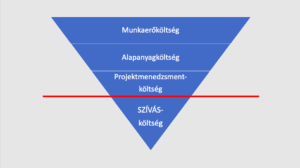One: relevant and honest positive feedback boosts motivation. Two: if you neglect giving feedback shortly after you see something you disapprove of, feelings of growing frustration will develop in your heart as you see the same behaviour again and again, and it will probably burst out with the least appropriate timing and style. There are also some people who do not hesitate to give feedback on the fly, basically any time. In many cases, however, that feedback is not supportive at all, therefore it is likely to destroy motivation and weaken the relationship. Here are six simple considerations you should keep in mind to ensure that your feedback is perceived as useful help, not as another example of cumbersome nagging from the manager.
Soon
The worst you can do is to wait with your feedback till the next performance appraisal discussion. Anything you see or hear that deserves reinforcement or corrective action should be communicated as soon as it is feasible. Otherwise it will be just as useful as a loaf of bread given 3 months later to a person who is hungry right now.
But not half-baked
Soon doesn’t mean though, that feedback is to be provided immediately, especially in the case of constructive criticism. On one hand, 1-to-1 format is more appropriate for such a discussion. On the other hand, if you want to abide by the three rules below, it makes a lot of sense to think over in advance, what exactly it is that you want to communicate, and how it is best worded.
Descriptive instead of evaluative
Useful feedback is not evaluative. What can you learn from the feedback that “you are doing a good job”, “you are inattentive” or “you are aggressive”? In response to these comments, reactions are unlikely to be constructive. People will get offended, fight back, or withdraw. It is far more helpful to comment on someone’s behaviour or performance by describing what you saw, heard or experienced. You can also add what tangible effect that behaviour has on you, the team or the organisation. If you have certain feelings around that effect, disclosing that to the other person can place more emphasis on the importance of the issue.
Using specific examples
Generalisation about other people, using words like “you never do” or “you always neglect” something is also like a red rag to a bull. In addition, it is seldom true. The respondent will easily come up with an exception. Especially when you have to give difficult feedback, it is imperative that you collect specific examples of your observation prior to the meeting to make your feedback well founded. Using data is also a great idea, if it is available.
Listen attentively and understand the other side
You never know for sure why people behaved in a certain way in a given situation. We are inclined to blame it on their personality traits and flaws. It is much wiser to give the floor to the other person when you finished your side. The best way is to shut up until thoughts keep coming. It is also a good idea to sum up, every now and then, what you understood. Then you can ask some questions if there is a need for further clarification. Listening to the views of the recipient also makes sense when you give positive feedback to further reinforce what is going well any why.
Agree on a next step
Any problem-related discussion only has real value if we reach some sort of an agreement for action. It is surprising, how many times people can actually figure out their own solution to make changes in their behaviour or actions. In some cases, however, you need to be more explicit in setting expectations. One final step is also necessary: to discuss when and how you are going to revisit and follow up the commitment.
Act2Manage Application
An interactive, gamification-based, practice-oriented leadership development application that provides immediate help and enables follow-up to the most common dilemmas.







